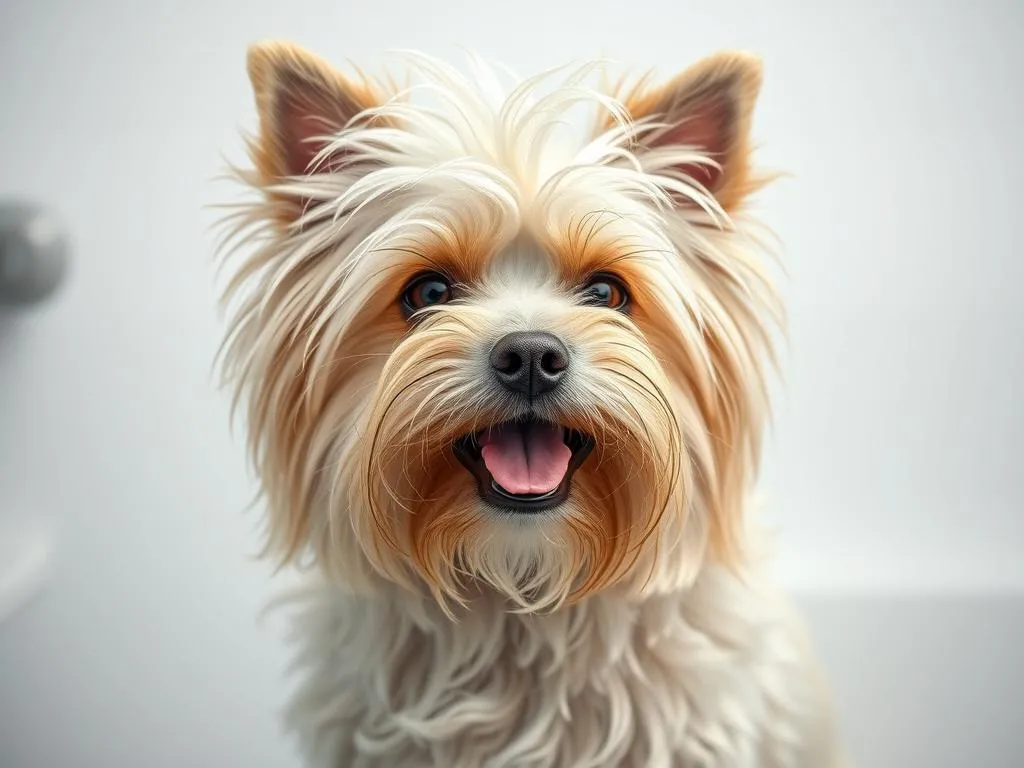
Introduction
Maintaining a dog’s health goes beyond just regular veterinary check-ups; it involves understanding and addressing their grooming needs as well. Grooming is an essential part of dog health care, particularly when it comes to the condition and appearance of their coat. One common question dog owners have is, do dogs need conditioner? This article will explore the significance of proper grooming, the role of conditioner in maintaining a dog’s coat health, and whether or not it is necessary for your furry friend.
Proper grooming not only enhances the appearance of a dog but also promotes skin health and can prevent various issues such as matting, skin irritation, and infections. Understanding the specific needs of your dog’s coat type is crucial for effective grooming, including the potential use of conditioner.
Understanding Dog Coat Types
Types of Dog Coats
Dogs come in various coat types, each requiring different grooming techniques and products. Here are the primary categories:
- Short-haired breeds: These dogs typically have smooth and sleek coats that require less maintenance. Breeds like Beagles and Dachshunds fall into this category.
- Long-haired breeds: Dogs such as Golden Retrievers and Shih Tzus have long, flowing coats that need regular brushing and occasional conditioning to prevent tangles.
- Curly-haired breeds: Breeds like Poodles and Bichon Frises have curly coats that require consistent grooming and conditioning to maintain their texture and prevent matting.
- Hairless breeds: While they don’t have fur, breeds like the Chinese Crested still require skin care to keep their skin healthy and hydrated.
Importance of Coat Type in Grooming
The type of coat your dog has plays a significant role in determining their grooming needs. For instance, short-haired breeds may not require conditioner as frequently as long-haired or curly-haired breeds, which can benefit greatly from the moisturizing and detangling properties of conditioner. Understanding these differences can help you tailor a grooming routine that best suits your dog’s needs.
The Role of Conditioner in Dog Grooming
What is Dog Conditioner?
Dog conditioner is a grooming product specifically formulated for canine coats. Unlike human conditioners, which may contain ingredients that can be harmful to dogs, dog conditioners are designed to be safe and effective for their unique coat and skin types. They help to moisturize the coat, making it softer and more manageable.
Benefits of Using Conditioner on Dogs
Using conditioner can provide numerous benefits for your dog’s coat, including:
- Moisturizing the coat: Conditioners often contain hydrating ingredients that keep the coat moisturized, preventing dryness and brittleness.
- Reducing tangles and mats: Regular use of conditioner can help to detangle hair, making grooming easier and reducing the risk of painful mats.
- Enhancing shine and softness: Conditioners can improve the overall look and feel of the coat, making it shinier and softer to the touch.
- Skin health benefits: Many conditioners contain soothing ingredients that can help alleviate dry skin and promote overall skin health, especially for dogs prone to skin issues.
Do Dogs Really Need Conditioner?
Factors to Consider
Whether or not your dog needs conditioner depends on several factors:
- Dog’s coat type and length: As previously mentioned, long-haired and curly-haired breeds often benefit from conditioning, while short-haired breeds may not need it as frequently.
- Skin sensitivities and allergies: If your dog has sensitive skin or allergies, it’s essential to choose a conditioner specifically formulated to avoid irritants.
- Environmental factors: Dogs who frequent swimming pools or live in dry climates may require more frequent conditioning to combat the effects of chlorine or dry air on their coat.
Expert Opinions
Veterinarians and professional groomers often have varying opinions on the necessity of conditioner. Many groomers recommend using a conditioner, especially for long-haired or curly-haired breeds, while some veterinarians emphasize a more tailored approach based on the individual dog’s needs. Consulting with your veterinarian or groomer can provide valuable insights into whether conditioner is suitable for your dog.
How to Choose the Right Conditioner for Your Dog
Ingredients to Look For
When selecting a dog conditioner, it’s essential to consider the ingredients:
- Natural vs. synthetic ingredients: Many pet owners prefer products with natural ingredients, which are often gentler on the skin.
- Avoiding harmful chemicals: Look for conditioners free of sulfates, parabens, and artificial fragrances, as these can irritate your dog’s skin.
Recommended Products
While there are many dog conditioners available on the market, here are a few popular options:
- Earthbath Oatmeal & Aloe Conditioner: Known for its soothing properties, this conditioner is great for dogs with sensitive skin.
- Burt’s Bees for Dogs Natural Oatmeal Conditioner: A natural option that moisturizes and detangles fur without harmful chemicals.
- Pet Head Furtastic Crème Rinse: This conditioner offers a fruity scent and helps to soften and detangle fur.
Each product has its pros and cons, so consider your dog’s specific needs when making a selection.
DIY Dog Conditioners
If you prefer a natural approach, you can create homemade conditioners with simple ingredients. Here are a couple of recipes:
- Coconut Oil Conditioner: Mix equal parts coconut oil and olive oil. Apply to your dog’s coat and leave for 15 minutes before rinsing. This conditioner is excellent for moisturizing.
- Apple Cider Vinegar Rinse: Combine one part apple cider vinegar with two parts water. After shampooing, apply the mixture to your dog’s coat, leave it for a few minutes, and rinse. This rinse can help with shine and pH balance.
Using DIY options can be cost-effective and allows you to control the ingredients in your dog’s grooming products.
How to Properly Use Dog Conditioner
Step-by-Step Application Guide
To maximize the benefits of conditioner, follow these steps:
- Preparation: Before applying conditioner, ensure your dog is clean. Bathe them thoroughly with a suitable dog shampoo and rinse well.
- Applying conditioner: After rinsing the shampoo, apply a generous amount of conditioner to your dog’s coat, focusing on areas prone to tangles.
- Let it sit: Allow the conditioner to sit for 5-10 minutes to work its magic before rinsing thoroughly.
Tips for Best Results
- How much product to use: Use enough conditioner to cover the coat but avoid over-saturating, as this can lead to residue buildup.
- Duration for letting the conditioner sit: Allow the conditioner to sit for the recommended time to achieve optimal results.
- Rinsing techniques: Rinse thoroughly to ensure no product is left in the coat, as residue can cause irritation and dullness.
Alternatives to Conditioner
Natural Oils and Treatments
If you’re looking for alternatives to conventional conditioners, natural oils can be incredibly beneficial.
- Coconut oil: Acts as a natural moisturizer and can help with dry skin.
- Olive oil: Penetrates the hair shaft to provide moisture and shine.
Regular Grooming Practices
Regular grooming practices can significantly impact coat health.
- Brushing techniques: Brushing your dog regularly helps remove dirt, debris, and loose hair, promoting a healthy coat. The frequency should be based on the dog’s coat type—short-haired breeds may require brushing once a week, while long-haired breeds may need daily grooming.
- Bathing frequency: Too frequent bathing can strip natural oils from the coat, leading to dryness. Generally, bath your dog once a month, or more often if they become particularly dirty or smelly.
Common Misconceptions About Dog Coat Care
Conditioner Myths
Many myths surround the use of conditioner. One common misconception is that all dogs need conditioner regularly. In reality, conditioning should be based on individual coat types and specific needs.
Grooming Frequency Myths
Another myth is that long-haired breeds require grooming only once a month. In fact, they may need grooming several times a week to prevent tangles and mats. Understanding the specific grooming needs of your dog’s coat type is crucial.
Conclusion
In conclusion, understanding your dog’s grooming needs, including whether dogs need conditioner, is vital for maintaining their health and well-being. Proper grooming helps prevent skin issues, enhances coat condition, and ultimately contributes to your dog’s overall happiness.
As a dog owner, staying informed about your dog’s specific coat type and grooming requirements will help you make the best decisions regarding their care. Always consult with your veterinarian or a professional groomer for personalized advice tailored to your dog’s unique needs. With the right grooming routine, you can ensure your canine companion has a healthy, shiny, and beautiful coat.









